
Football on YouTube: La Liga Leads in Subscribers, but the Premier League Remains the King of Views
SFS in partnership with BuzzMyVideos
The year 2025 has definitively marked football’s full entry into the era of digital maturity. YouTube has become the main playing field for clubs and leagues around the globe — a vast arena where success is no longer measured only in trophies, but also in views, subscribers and editorial strategy.
In this evolving scenario, the numbers are clear: while the Premier League remains the undisputed leader in total views, the real breakout star of the year is Spain, with La Liga exploding in growth and dominating both in subscriber totals and performance acceleration.
Perhaps the most striking transformation is that of Atlético Madrid, which recorded a staggering 1,029% growth in subscribers, going from just 525,000 to nearly 6 million in one year. This success wasn’t just about quantity — although the club did publish 1,500 videos in 2025 — but about crafting a compelling, creative, and socially conscious strategy.
Atlético has positioned itself as more than a club: it has become a cultural communicator, engaging fans with initiatives like a Christmas film promoting animal adoption and a Valentine’s Day campaign redefining the concept of love and loyalty.
Equally impressive is Barcelona, which posted the largest view increase of any club worldwide — over 2.1 billion new views in one year, reaching a total of 5.5 billion. This was driven by a content ecosystem that blends reactive formats like match highlights and post-match reactions with curated off-pitch content such as recovery sessions, behind-the-scenes vlogs, and challenge videos. Barça isn’t just a team — it’s a storytelling engine. The club added nearly 5.1 million new subscribers, reflecting a 29% growth year-over-year.
What’s truly remarkable is that this momentum extends beyond the giants. Clubs like Girona and UD Las Palmas experienced subscriber growth of 1,106% and 3,391%, respectively. It’s clear that digital value is no longer reserved for the elite — with the right strategy, even emerging clubs can stand out. Yet when it comes to total YouTube views, the Premier League is still on another level. In 2025, it surpassed 15.6 billion views, remaining the global leader in digital football consumption.
Liverpool topped the English clubs with 11.4 million subscribers, gaining 1.3 million new ones in just 12 months. The club also posted 768 million new views, making it the most-watched Premier League team of the year. Manchester United reached the symbolic 10 million subscriber mark, adding over 556 million views, while Manchester City showed solid growth with 1 million new subscribers and 483 million additional views. One major takeaway is the role of content frequency: Liverpool uploaded 1,853 videos in one year, the highest among Premier League teams.
In terms of volume, Paris Saint-Germain leads globally, having published more than 3,000 videos in 2025 alone — a clear sign that even Ligue 1 clubs are stepping up their digital game.
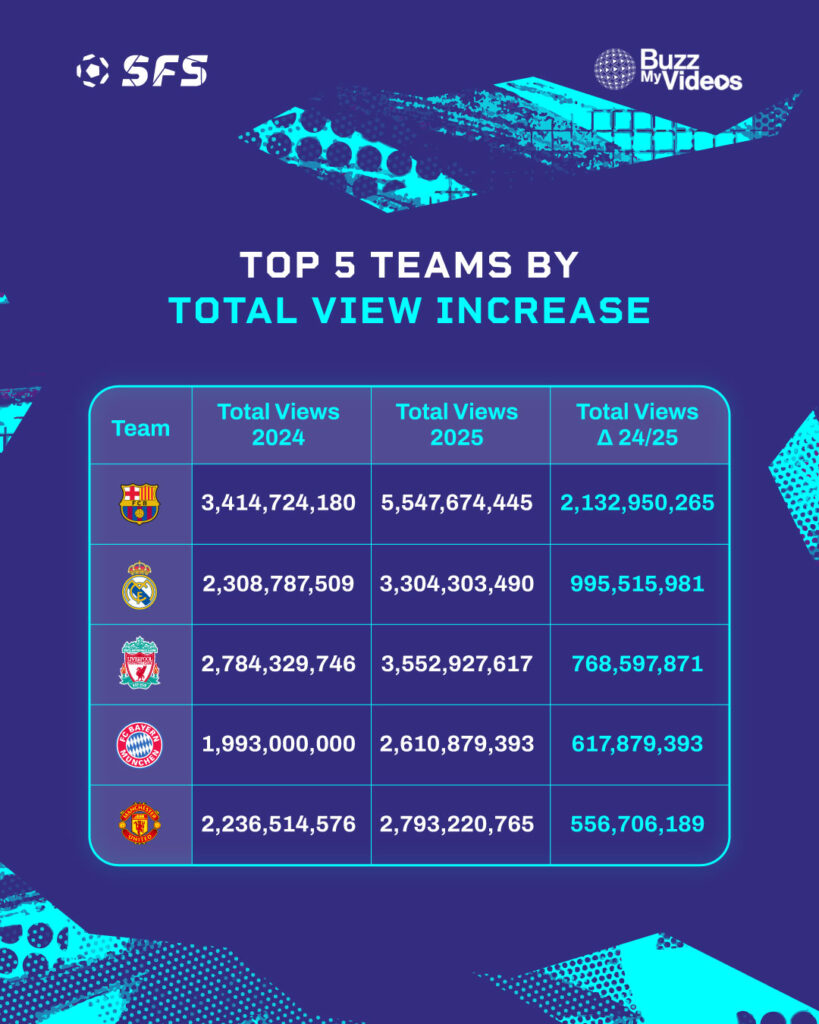
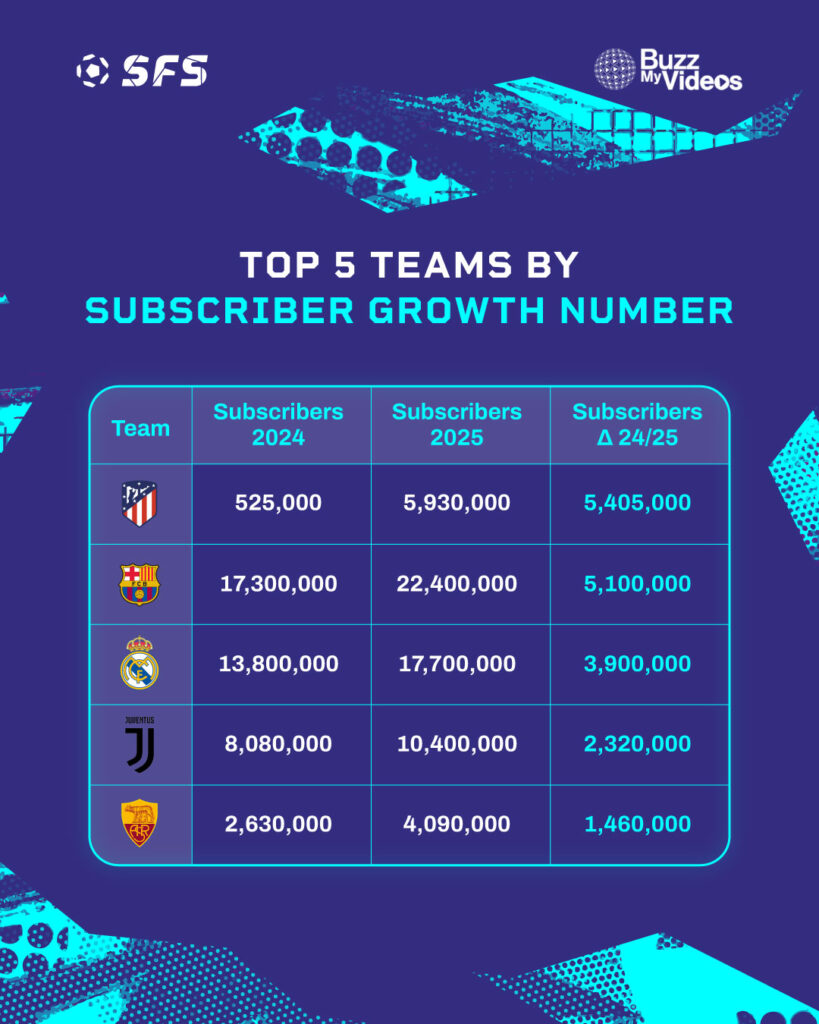
Meanwhile, Udinese holds the historic upload record with 29,275 total videos, and Borussia Mönchengladbach tops the engagement charts with an impressive 1,102 average views per subscriber — the highest in Europe.

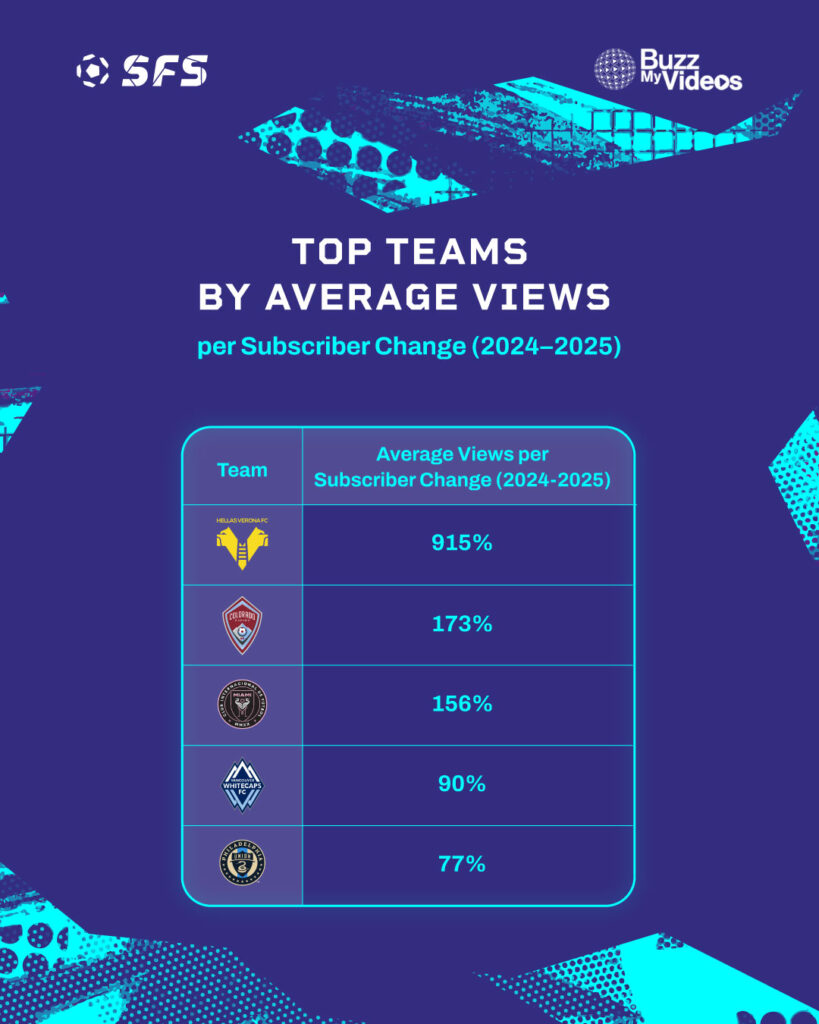
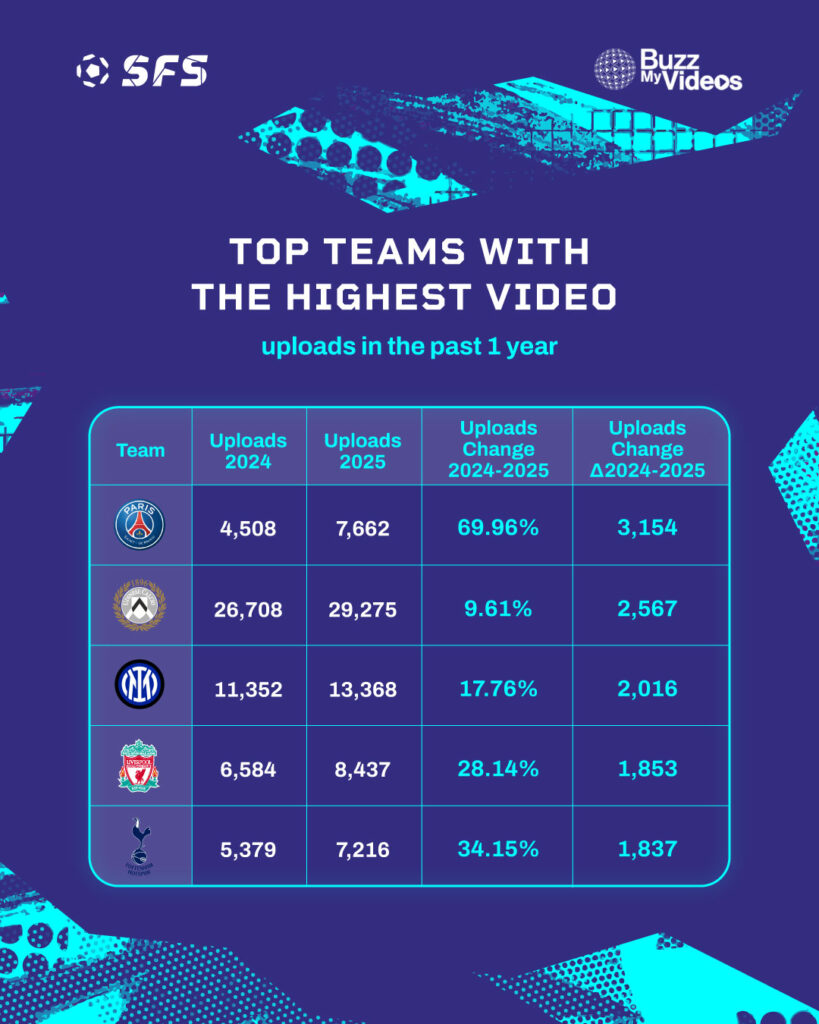
Across the Atlantic, the arrival of Lionel Messi had a seismic impact on Inter Miami’s YouTube channel. The club nearly tripled its annual views, jumping from 14.9 million to 64.8 million, and grew its subscriber base by over 68%, reaching 441,000.
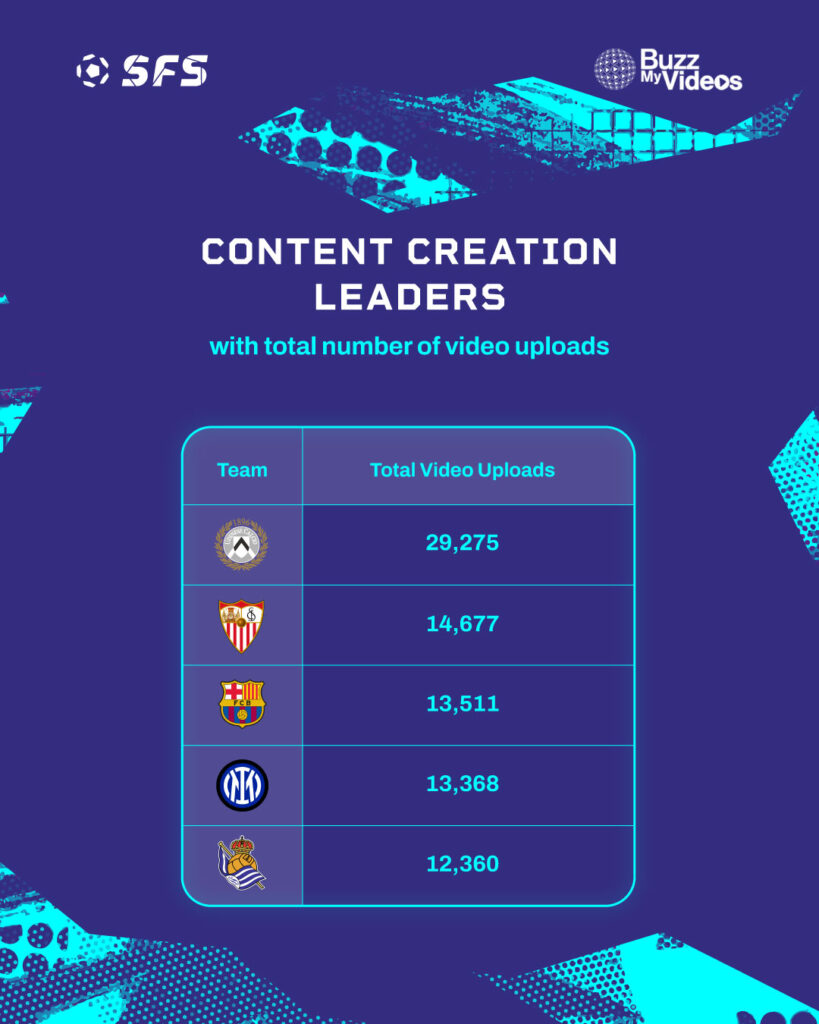
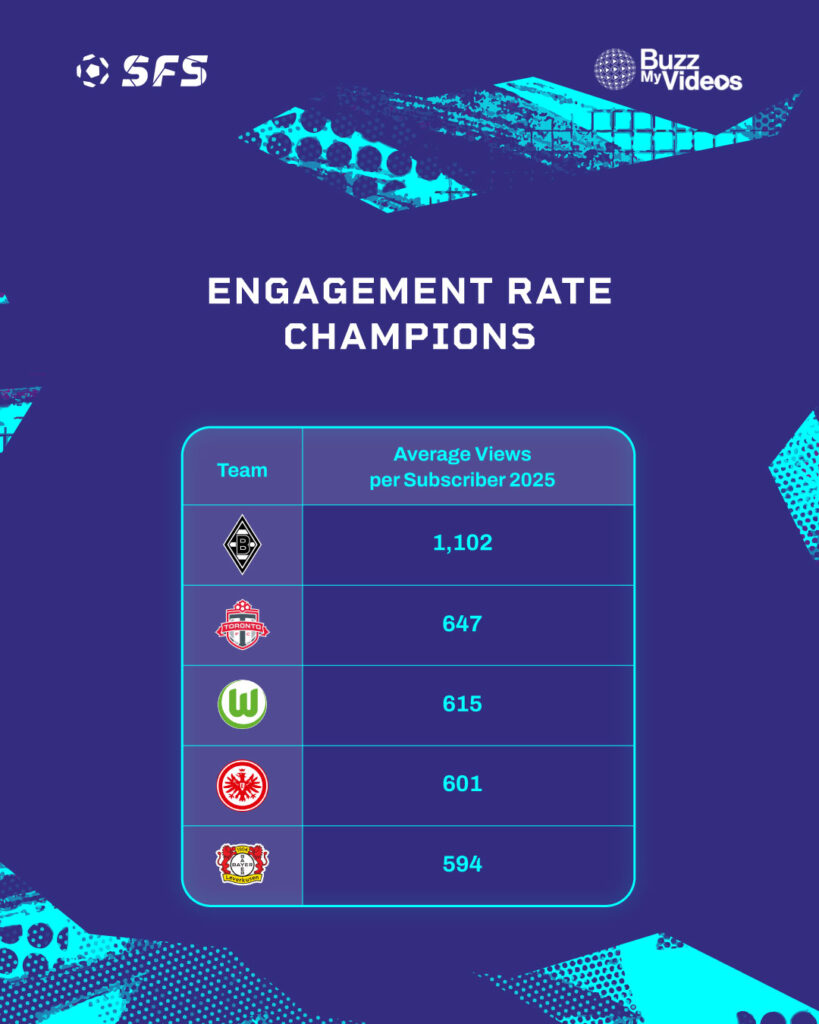
But Miami’s success isn’t just about Messi. The club invested in original formats — including mini-documentaries and a weekly show — turning casual interest into a loyal digital audience. Other MLS teams like New York City and Colorado Rapids are also showing signs of digital growth through training footage, academy content, and interviews.
Engagement and Uploads: Who Are the Real Content Workhorses?
– Paris Saint-Germain leads in video production for 2025, publishing over 3,154 new videos in a single year.
– Udinese holds the record for most videos uploaded overall, with a staggering 29,275 videos — more than any other club.
– Borussia Mönchengladbach tops the chart for average engagement, reaching 1,102 views per subscriber in 2025 — the highest in Europe.
In Germany, Bayern Munich strengthened its leadership on and off the pitch. The Bavarian giants added 617 million new views, thanks to high-quality productions like their 20-year Allianz Arena celebration and special content on Harry Kane’s record-breaking season.
Meanwhile, Borussia Mönchengladbach saw an 85% subscriber increase and led the continent in engagement rate, proving that quality content outperforms quantity when it resonates with fans.
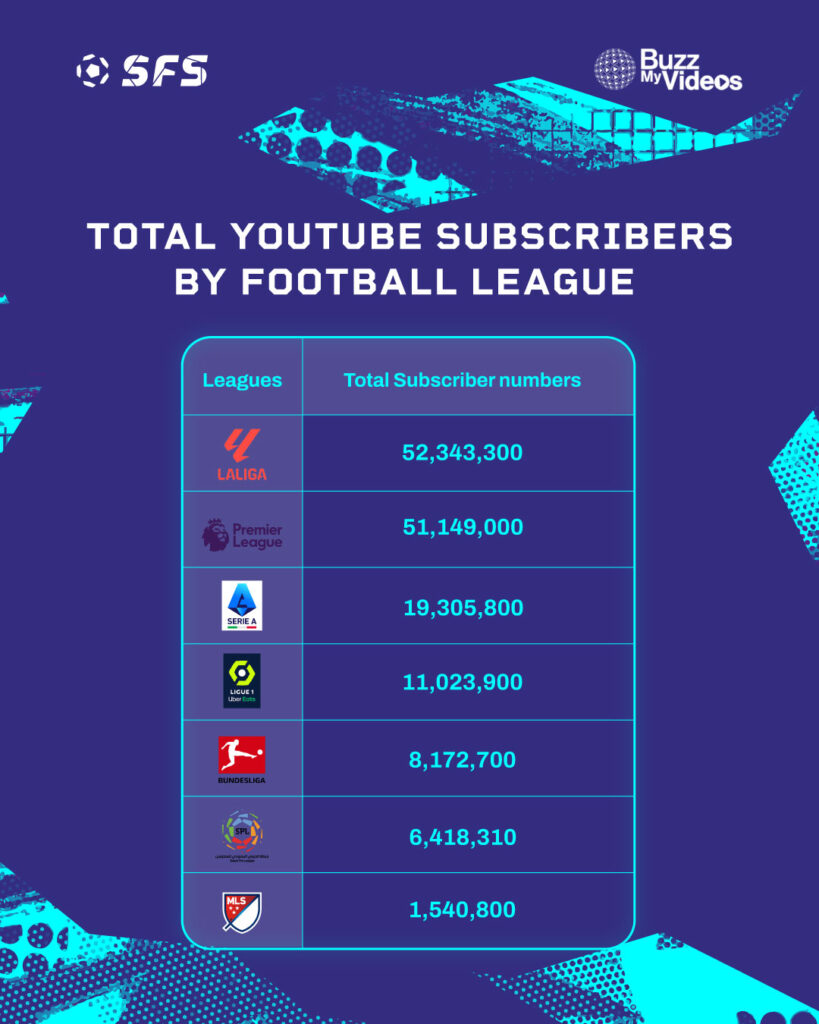
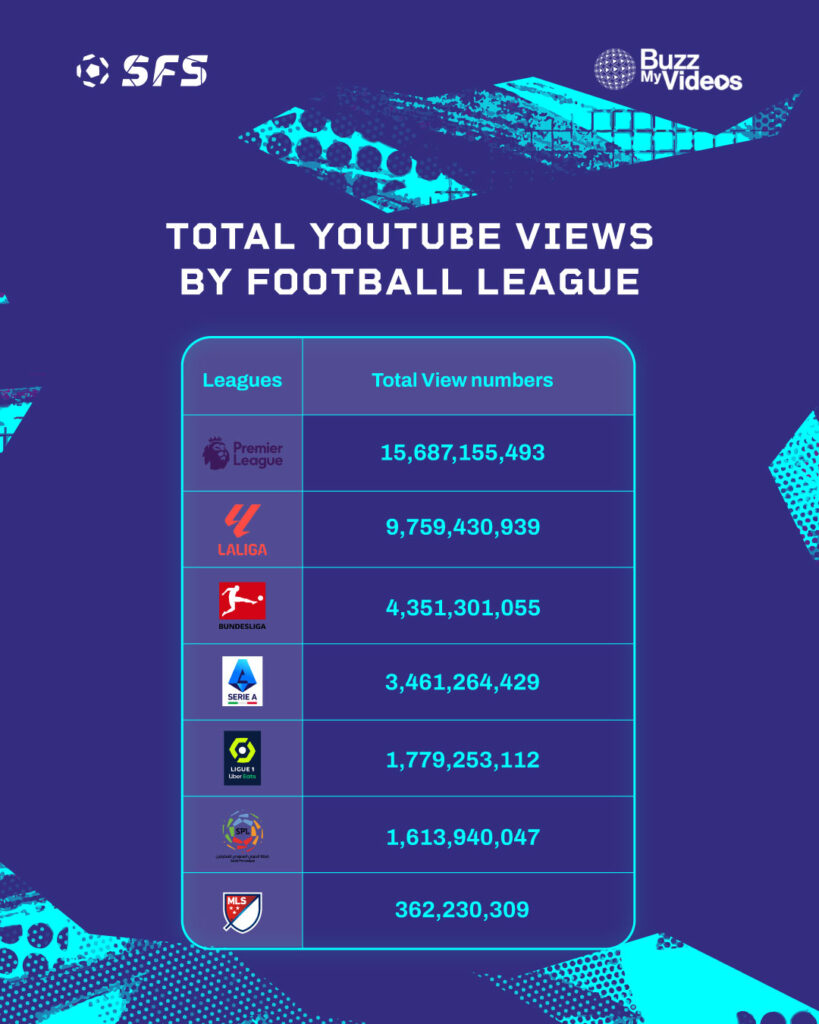
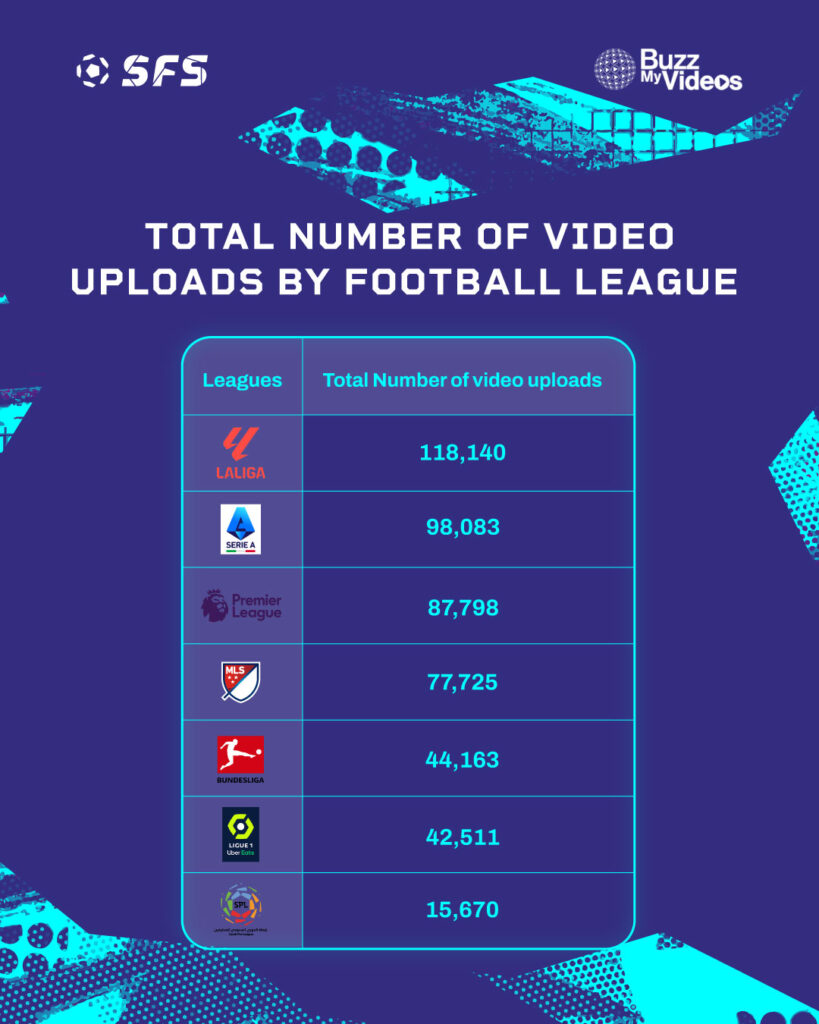
In Serie A, Juventus stood out with 2.3 million new subscribers and 340 million new views, thanks to a rich content mix of behind-the-scenes access, player vlogs, podcasts, and their innovative Creator Lab.
AS Roma followed with solid digital growth, while Napoli, despite winning the Scudetto, posted modest numbers — just 31,000 new subscribers and 6.4 million views. A likely reason? The club uploaded only 155 videos in the entire year, the lowest among major Italian sides.
Looking at the broader picture, La Liga now leads in total combined subscribers, with over 52 million, narrowly beating the Premier League’s 51 million. However, in terms of total views, the Premier League remains dominant, thanks to its global fanbase and digital maturity.
The data also highlights the rise of new digital frontiers, such as the Saudi Pro League, where Al Nassr and Al Hilal are leveraging the global pull of stars like Cristiano Ronaldo. Similarly, MLS is emerging as a case study in modern content strategy, with Inter Miami as the leading example.
Football on YouTube is no longer just about goals and highlights. It’s a dynamic storytelling space, where clubs can define their identity, connect with global fans, and build community.
Those who invest in original formats, publish consistently, and innovate in tone and style are the ones who win — not just on the pitch, but across the digital world as well.
* Note: We compiled this report by comparing clubs’ current (June 2025) YouTube stats with our data from June 2024. Please note that relegated teams from last season, newly promoted teams, and clubs without YouTube channels are not included in this analysis.



